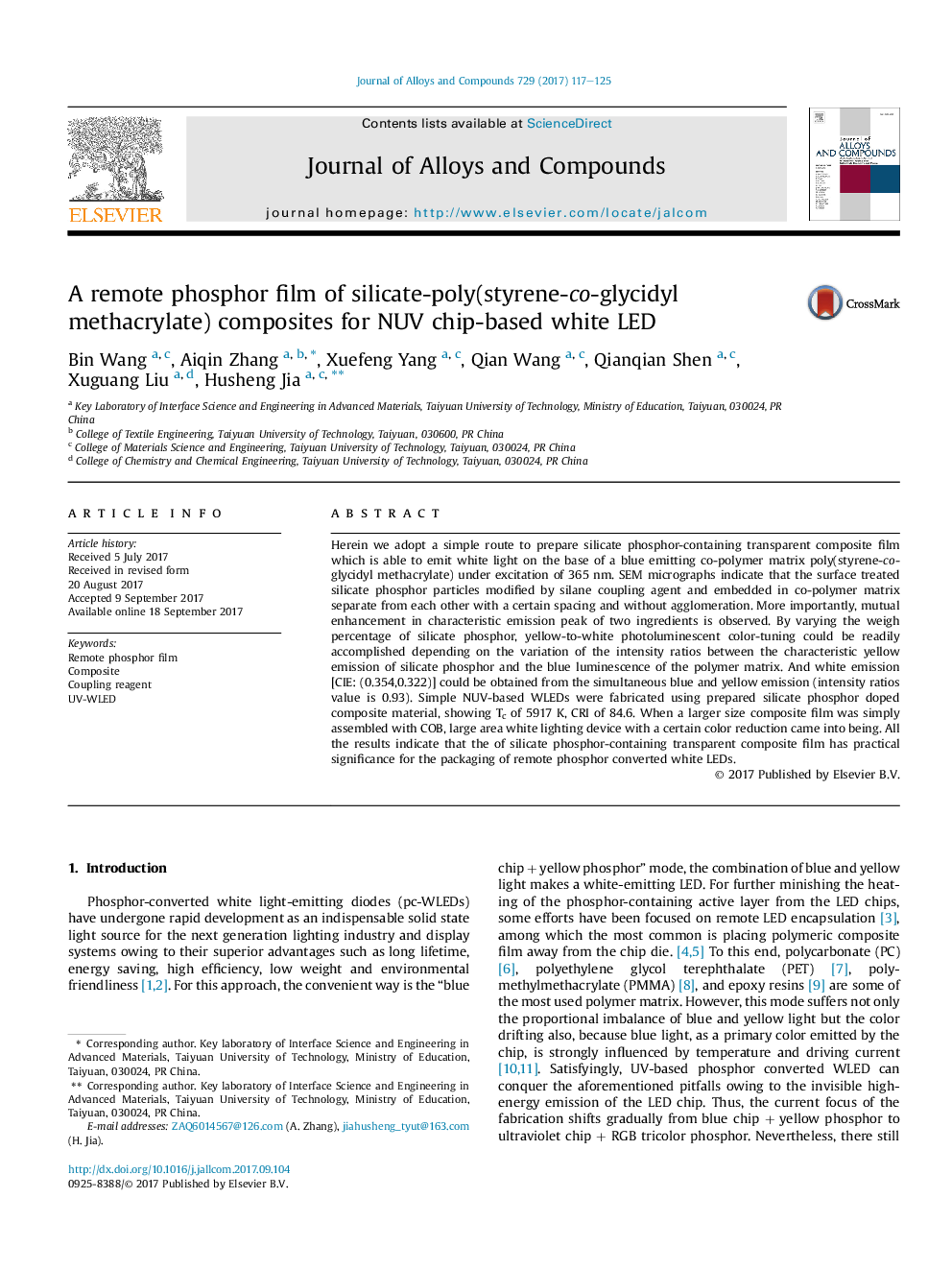| Article ID | Journal | Published Year | Pages | File Type |
|---|---|---|---|---|
| 5458227 | Journal of Alloys and Compounds | 2017 | 9 Pages |
Abstract
Herein we adopt a simple route to prepare silicate phosphor-containing transparent composite film which is able to emit white light on the base of a blue emitting co-polymer matrix poly(styrene-co-glycidyl methacrylate) under excitation of 365Â nm. SEM micrographs indicate that the surface treated silicate phosphor particles modified by silane coupling agent and embedded in co-polymer matrix separate from each other with a certain spacing and without agglomeration. More importantly, mutual enhancement in characteristic emission peak of two ingredients is observed. By varying the weigh percentage of silicate phosphor, yellow-to-white photoluminescent color-tuning could be readily accomplished depending on the variation of the intensity ratios between the characteristic yellow emission of silicate phosphor and the blue luminescence of the polymer matrix. And white emission [CIE: (0.354,0.322)] could be obtained from the simultaneous blue and yellow emission (intensity ratios value is 0.93). Simple NUV-based WLEDs were fabricated using prepared silicate phosphor doped composite material, showing Tc of 5917Â K, CRI of 84.6. When a larger size composite film was simply assembled with COB, large area white lighting device with a certain color reduction came into being. All the results indicate that the of silicate phosphor-containing transparent composite film has practical significance for the packaging of remote phosphor converted white LEDs.
Keywords
Related Topics
Physical Sciences and Engineering
Materials Science
Metals and Alloys
Authors
Bin Wang, Aiqin Zhang, Xuefeng Yang, Qian Wang, Qianqian Shen, Xuguang Liu, Husheng Jia,
